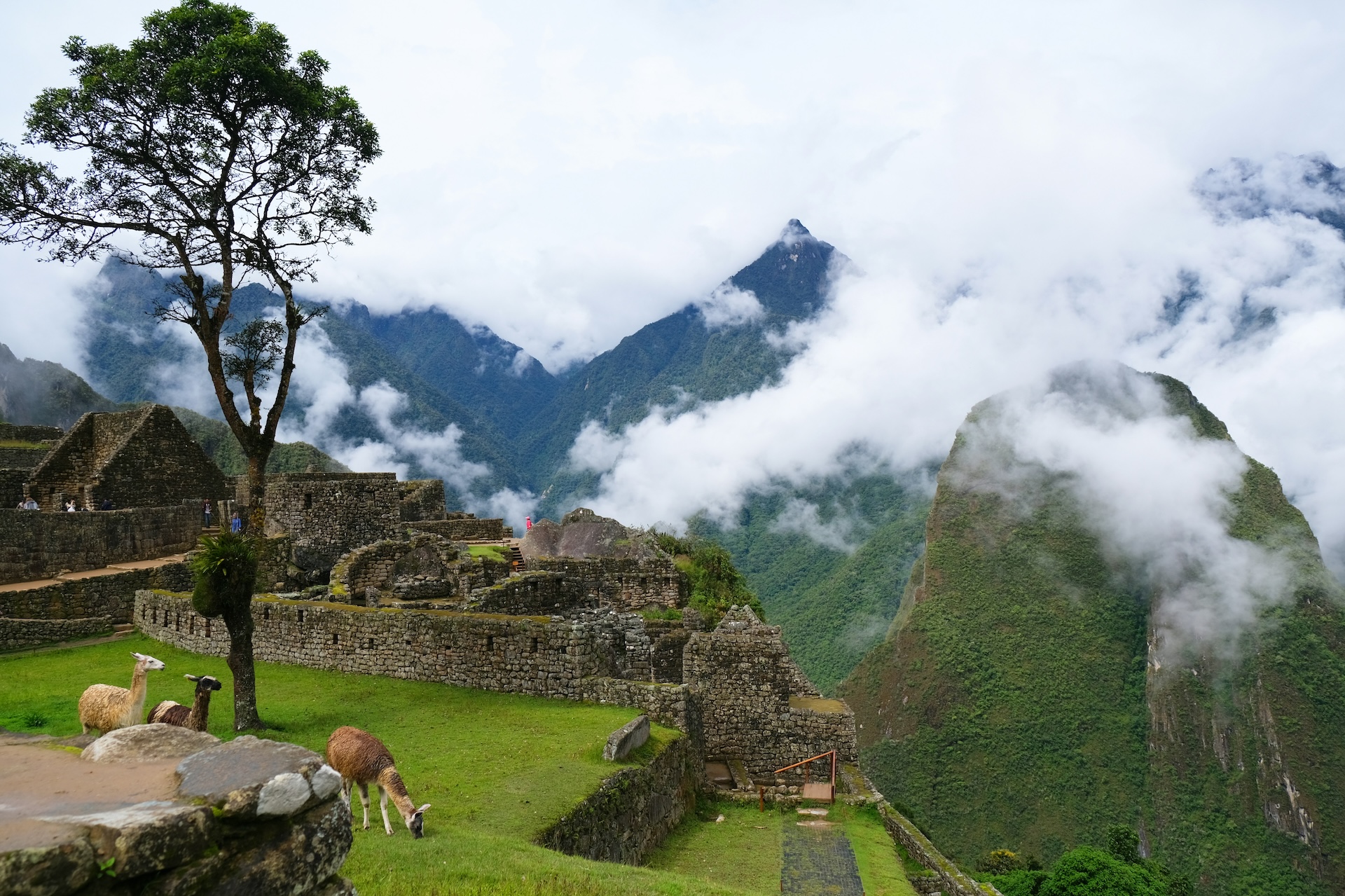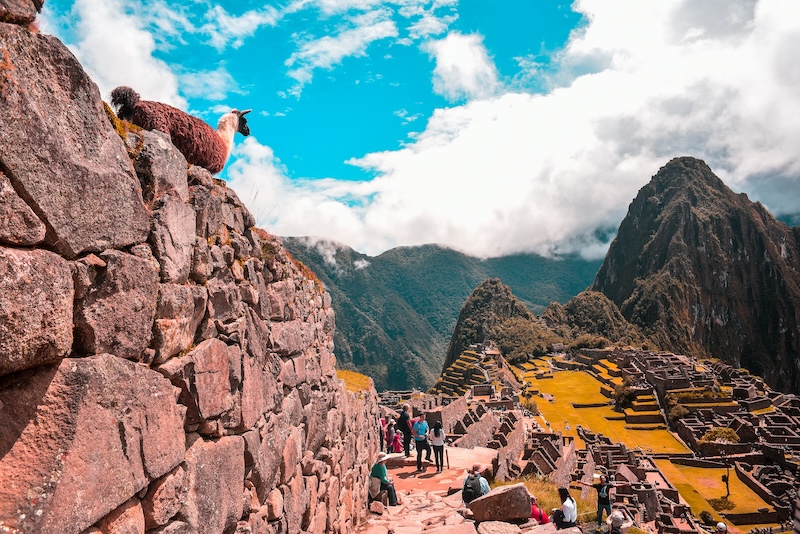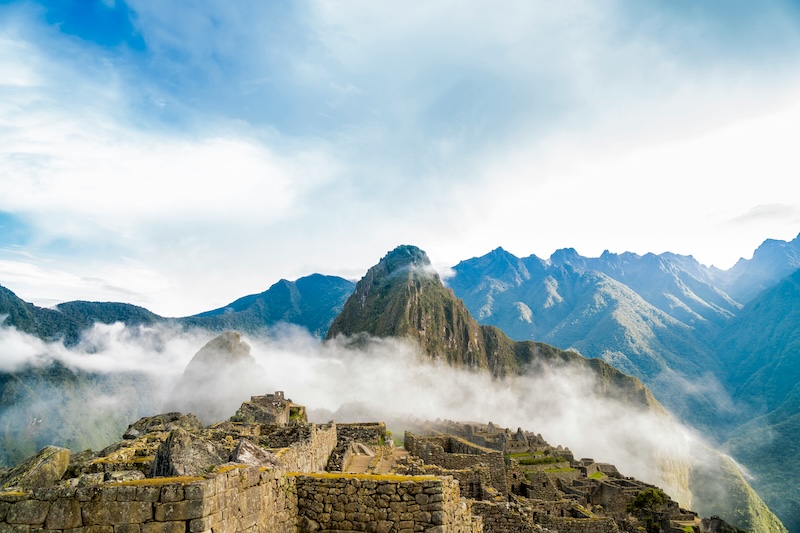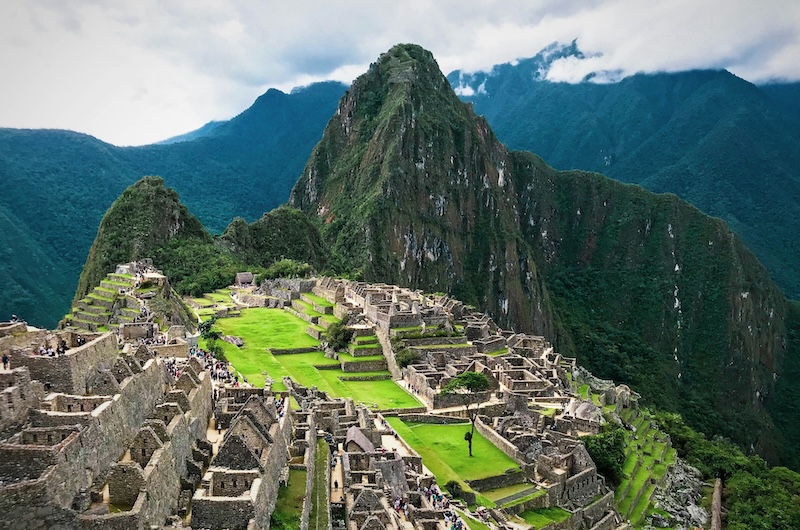Machu Picchu, the enigmatic Incan citadel, perched high in the Andes Mountains of Peru, is one of the most captivating archaeological marvels of the world. Its mysteries have intrigued historians, archaeologists, and adventurers alike. The allure of its ancient stonework, coupled with the breathtaking natural beauty surrounding it, has made Machu Picchu a symbol of both mystery and resilience.
But what makes Machu Picchu so mysterious, and how can you, as an intrepid explorer, embark on a journey from Cusco to this enigmatic site? Let’s delve into the allure of Machu Picchu and provide you with a practical guide to reach it.
Machu Picchu was built by the Inca Empire in the 15th century during the reign of the great Inca ruler, Pachacuti. However, the purpose of its construction remains shrouded in mystery. Some scholars believe it served as a royal estate or a sacred religious site, while others argue it might have been a retreat for the Incan elite. The site’s isolation and its seemingly strategic location suggest that it could have also been a fortress or a place of refuge in times of conflict.
The precision of its stonework, astronomical alignments, and its location in a cloud forest add layers to its intrigue, sparking endless debates and theories. The lack of written records from the Incas only deepens the mystery, leaving much to be inferred from archaeological and environmental evidence. This blend of historical ambiguity and architectural brilliance continues to fascinate researchers and tourists alike.
Nestled at an elevation of 7,970 feet (2,430 meters) above sea level, Machu Picchu is situated in the Eastern Cordillera of southern Peru, within the Machu Picchu District in the Urubamba Province. Surrounded by lush green peaks and the winding Urubamba River, it is a testament to the Incas’ architectural prowess and their profound connection with nature. The site’s remote location contributed to its preservation, as it remained hidden from the Spanish conquistadors during their invasion of the Incan Empire.
Its positioning in a cloud forest means that it is often shrouded in mist, lending an ethereal quality to the ruins and enhancing its aura of mystery. The biodiversity of the surrounding region, with its unique flora and fauna, adds another layer of attraction for nature lovers and biologists. The combination of its natural setting and historic significance makes Machu Picchu a unique destination.

The architectural ingenuity of Machu Picchu is a marvel in itself. With perfectly interlocking stones, the Incas constructed temples, terraces, and water channels that have withstood the test of time and seismic activity. The absence of mortar and the precision of the stone fittings prompt questions about the techniques and tools used by the Incas. The site’s design not only showcases their advanced engineering skills but also reflects their ability to harmonize architecture with the natural landscape.
The terraces, for example, were not only used for agriculture but also to prevent landslides and manage the flow of water. Their construction required a deep understanding of geology and hydrology. The seamless integration of the structures with their natural surroundings is indicative of the Incas’ sophisticated approach to sustainable building practices.
Machu Picchu’s layout is believed to hold significant astronomical alignments. Structures like the Intihuatana stone, the Temple of the Sun, and the Room of the Three Windows are thought to align with celestial events like solstices and equinoxes. These alignments reflect the Incas’ advanced understanding of astronomy and their spiritual connection with the cosmos. The Intihuatana stone, for instance, is often referred to as a “hitching post of the sun,” and it may have been used to predict solstices.
These astronomical features indicate that Machu Picchu was not only a center of political and administrative activities but also of religious and astronomical observations. The Incas’ capacity to integrate these elements into their architecture reveals a civilization deeply attuned to the rhythms of nature and the cosmos.

Embarking on a journey from Cusco to Machu Picchu is an adventure in itself, offering a blend of stunning landscapes and rich cultural experiences. The journey not only takes you through breathtaking natural vistas but also allows you to experience the vibrant culture of the Andean communities. Here’s how you can make your way to this majestic site.
The most iconic route, the Inca Trail, is a 4-day trek that leads you through breathtaking mountain scenery, cloud forests, and ancient ruins. This trail requires a permit and is best suited for those seeking an immersive hiking experience. The journey culminates at the Sun Gate, where you can witness the first rays of sunlight illuminating Machu Picchu. The trail is a physical challenge, but it offers a unique opportunity to walk in the footsteps of the ancient Incas.
Along the way, trekkers encounter a variety of Incan ruins, each offering insights into the life and culture of this ancient civilization. The trail is dotted with awe-inspiring vistas and diverse ecosystems, providing a rich tapestry of experiences that culminate in the awe-inspiring view of Machu Picchu. The sense of accomplishment upon reaching the Sun Gate is unparalleled and provides a deep connection to the historical significance of the site.
For those preferring a more relaxed journey, trains run from Cusco to Aguas Calientes, the town at the foot of Machu Picchu. The train journey offers panoramic views of the Sacred Valley and the Urubamba River. From Aguas Calientes, a short bus ride or a hike will take you to the entrance of Machu Picchu. This option is ideal for travelers with limited time or those who prefer not to trek.
The train journey itself is a memorable experience, with options ranging from luxury carriages to more budget-friendly choices. As the train winds through the Andean landscape, passengers can enjoy the stunning scenery and anticipate the adventure that awaits them at Machu Picchu. The convenience of this travel method allows visitors to focus on exploring the site and the surrounding area at their leisure.
While planning your journey, consider extending your adventure with a Cusco to Manu National Park. The Manu National Park, a UNESCO World Heritage site, is a biodiversity hotspot. This tour offers an opportunity to explore pristine rainforest ecosystems, observe diverse wildlife, and experience the cultural heritage of indigenous communities. The journey from Cusco to Manu is a remarkable excursion into one of the world’s most diverse and untouched natural environments.
The tour not only enhances your understanding of Peru’s rich ecological and cultural tapestry but also provides a deeper appreciation for the Inca civilization’s reverence for nature. By combining your visit to Machu Picchu with a trip to Manu, you will experience the full spectrum of Peru’s natural and cultural wealth, creating a truly unforgettable adventure.

The best time to visit Machu Picchu is during the dry season, from May to September, when the weather is pleasant and rainfall is minimal. However, this is also the peak tourist season, so early bookings are recommended. Visiting during these months ensures clearer skies and better visibility, allowing you to fully appreciate the site’s beauty.
If you prefer fewer crowds, consider visiting in April or October, when the weather is still relatively dry, but the site is less crowded. Each season offers its unique perspective of Machu Picchu, with the lushness of the rainy season providing a different kind of beauty. Regardless of when you visit, prepare for a range of weather conditions due to the site’s high-altitude location.
Given its high altitude, acclimatization is essential to avoid altitude sickness. Spend a few days in Cusco, which is at a higher elevation, to adjust before heading to Machu Picchu. Acclimatization helps your body cope with the reduced oxygen levels and can make your experience more enjoyable.
During your stay in Cusco, take it easy, stay hydrated, and avoid strenuous activities. Consuming coca tea, a traditional remedy used by locals, can also aid in alleviating symptoms of altitude sickness. Proper acclimatization will ensure you’re in good shape to explore the wonders of Machu Picchu without discomfort.
If you’re planning to trek the Inca Trail, secure your permits well in advance, as they are limited. Entry tickets to Machu Picchu should also be purchased ahead of time, especially during the high season. Planning your visit in advance ensures you won’t miss out on the experience due to limited availability.
Tickets and permits can sell out months in advance, particularly for the Inca Trail, so early preparation is key. Consider booking through a reputable tour operator who can assist with permits and offer guidance on the best travel options. By organizing your trip early, you can focus on enjoying the adventure rather than worrying about logistics.
Respect the natural environment and cultural heritage of Machu Picchu by following sustainable travel practices. Carry reusable water bottles, avoid leaving trash, and adhere to park regulations to help preserve this wonder for future generations. By being mindful of your impact, you contribute to the ongoing preservation of this historical site.
Consider supporting local businesses and communities by choosing locally-owned accommodations and services. Engaging with local culture not only enriches your travel experience but also supports the livelihoods of those who call the region home. Sustainable travel ensures that Machu Picchu remains a place of wonder for generations to come.

Machu Picchu stands as a testament to the ingenuity and spirituality of the Inca civilization. Its mysteries continue to captivate and inspire explorers from around the globe. Whether you choose to trek the ancient Inca Trail or journey by train, reaching Machu Picchu from Cusco promises an unforgettable adventure. With careful planning and respect for the site’s cultural significance, you can unlock the secrets of Machu Picchu and create your own story in this timeless wonder of the world.
The journey to Machu Picchu is as much about the exploration of self as it is about discovering an ancient civilization. By immersing yourself in the history and natural beauty of the Andes, you gain a deeper understanding of the world and your place within it. As you stand atop this majestic site, you’ll find that the mysteries of Machu Picchu are not just about uncovering the past, but also about discovering the present and the possibilities of the future.
If you got any questions, please do not hesitate to send us a message. We reply within 24 hours!
+51 900 394 399
info@biomanuexpeditions.com
reservas@biomanuexpeditions.com
